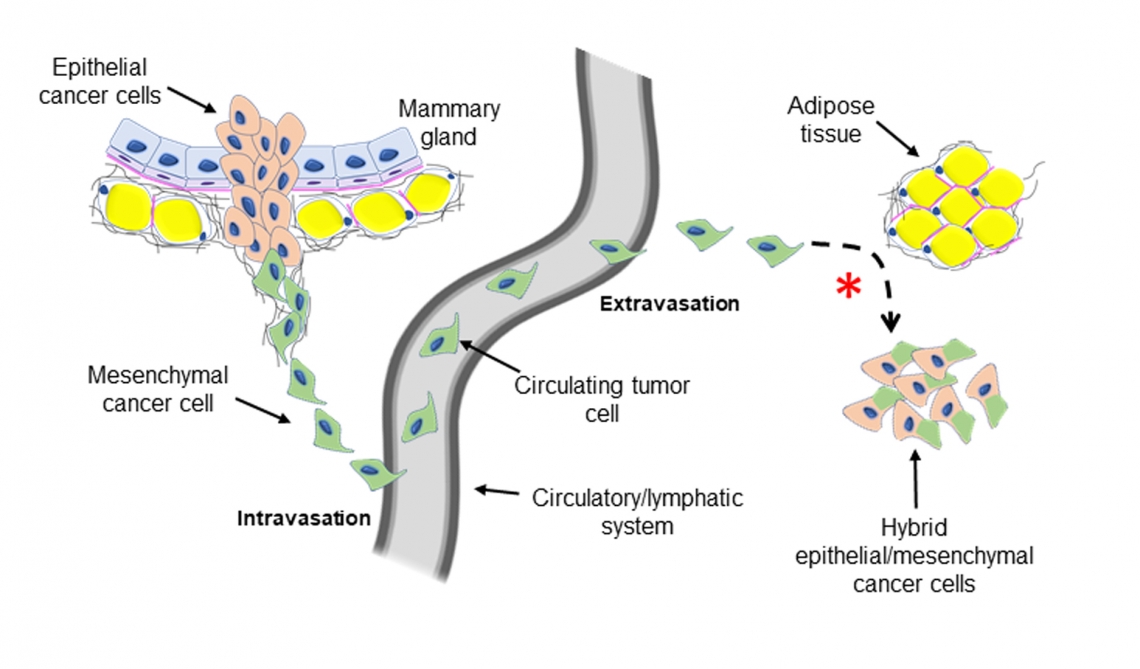Obesity and Cancer
Obese women have an increased risk of dying from breast cancer. We are interested in understanding the specific interactions between fat cells and breast cancer cells that drive this phenomenon.
Tumour cells exist in a complex microenvironment that includes fat cells and extracellular matrix (ECM) proteins. The ECM influences both fat cell function and breast cancer cell development. Thus, we developed model that incorporates the ECM, fat cells, and breast cancer cells so that we can better study these interactions in the lab. We found that fat cells cause breast cancer cells to change in a way that could allow the breast cancer cells to be better able to form tumours at secondary sites.
Mostly recently, we have identified a protein called LOX (lysyl oxidase) as being secreted from adipocytes when they are cultured with ECM. LOX is responsible for causing the alterations in breast cancer cells. We are currently trying to figure out how this is happening.

This work was funded by Memorial University seed funds and the Cancer Research Society.
Van Stiphout CM, Kelly G, Pallegar NK, Elbakry E, Vilchis-Celis AV, Christian SL, Viloria-Petit AM. (2024) Identification of lysyl oxidase as an adipocyte-secreted mediator that promotes a partial mesenchymal-to-epithelial transition in MDA-MB-231 cells.Explor Target Antitumor Ther. 5(1):1-19. doi: 10.37349/etat.2024.00201.
EC Asante, NK Pallegar, AJ Hoffmann, AM Viloria-Petit, SL Christian (2020) Adipose Tissue from Lean and Obese Mice Induces a Mesenchymal to Epithelial Transition-Like Effect in Triple Negative Breast Cancers Cells Grown in 3-Dimensional Culture. International journal of molecular sciences 21 (17), 6439
Pallegar NK, Garland CJ, Mahendralingam M, Viloria-Petit AM, Christian SL*. (2019) A Novel 3-Dimensional Co-culture Method Reveals a Partial Mesenchymal to Epithelial Transition in Breast Cancer Cells Induced by Adipocytes. J Mammary Gland Biol Neoplasia. 2019 Mar;24(1):85-97. doi: 10.1007/s10911-018-9420-4. Epub 2018 Nov 24.
Christian SL*, Pallegar NK, Brown RJ, and Viloria-Petit AM (2018) Collagen overlays can inhibit leptin and adiponectin secretion but not lipid accumulation in adipocytes. PeerJ. 6:e4641 doi: 10.7717/peerj.4641